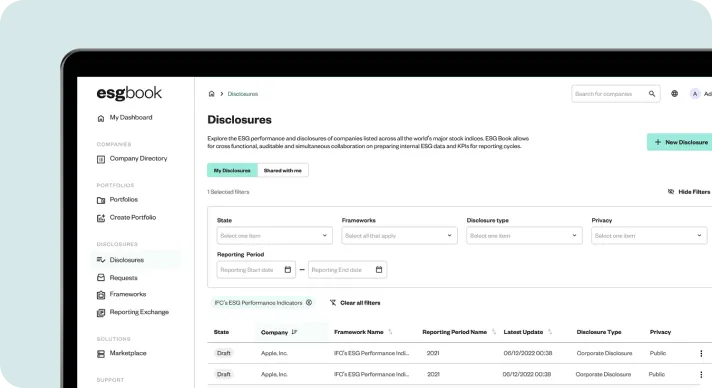Finance customers’ shift to low-carbon operations with emissions tracking
Financial Institutions use ESG Book to grow sustainability-linked loan volume with verified borrower emissions data and track client progress against their transition plans.



.avif)
.avif)

The Challenge
Without reliable data, underwriting sustainability-linked loans is difficult, and tracking borrower progress is manual, if it happens at all.
ESG Book helps Financial Institutions grow their sustainability loan book by making it easy to request and collect validated borrower emissions data for accurate underwriting and progress tracking
Access borrower emissions & targets
Collect both public and private borrower disclosures, along with forward-looking targets. Use this combined data in your scoring models to inform lending decisions.
Access baseline emissions and other public sustainability data on 76,000 companies, including 500+ metrics on 10,000 companies, covering hard-to-abate sectors, EU Taxonomy alignment, and Scope 1–3 estimates
.png)
Validate borrower data automatically
Standardise borrower data for integration into underwriting, risk models, and reporting, while reducing reliance on self-reported figures.
Catch errors before they become issues with real-time validation, automated consistency checks, and source documentation linked to every data point.
.avif)
Track borrower progress
Public data is updated daily, and private borrower data is refreshed as new information is added, so you track borrower progress against transition plans and identify missed commitments.
Data can be integrated into your internal systems via API, Snowflake, AWS, GCP, SFTP, and can also be accessed via CSV or through the ESG Book web platform.
.png)
Streamline your transition financing with ESG Book
“As the demand for reliable and comparable climate-related information continues to grow, a standardised data request and reporting template is essential...This is especially valuable when requesting data from privately held companies, where these disclosures are often limited."

